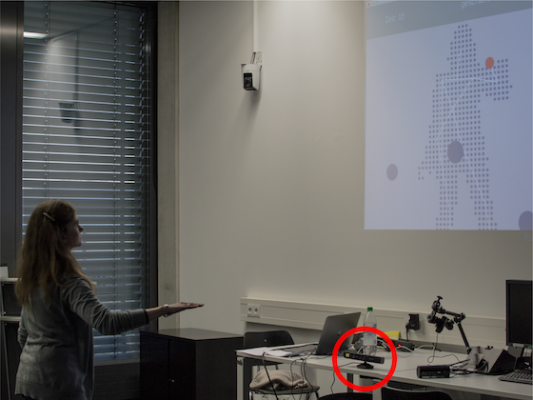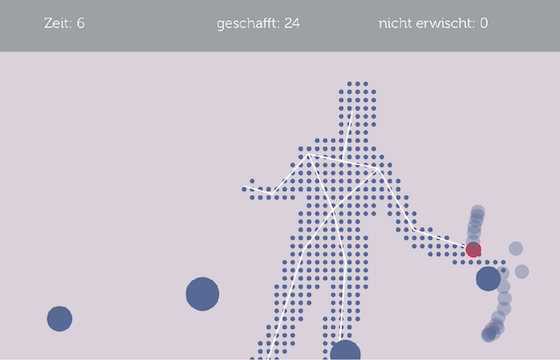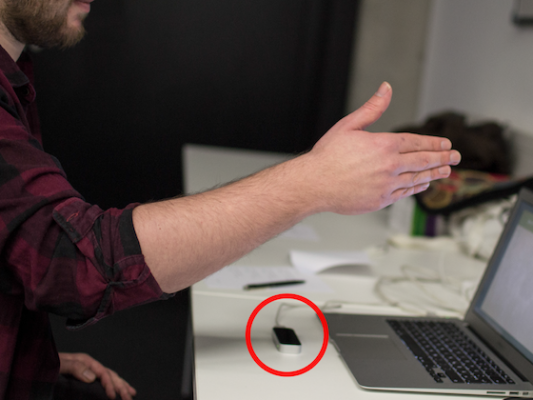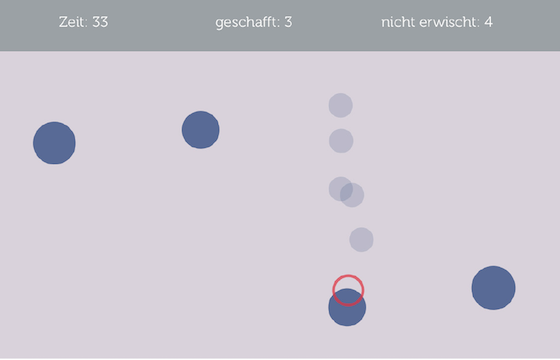2018
Gesture Research
Julia Krammling, Teresa Kendel
It is proven that a user perceives gestures more convenient when they are easier to perform, especially in terms of effort that has to be put into the movement [Liu, Thomas: “Gesture Interfaces: Minor Change in Effort, Major Impact on Appeal”, 2017]. On the other hand, movement leads to a release of serotonin and other happiness hormones, which is why we assume that big gestures could be preferred by users when performed in the context of a game and in front of a big screen—and when fatigue doesn’t play a too important role. We compared effortful (big) gestures with easy (small) gestures to find out, which gestures are perceived more convenient by users. The participants of our study had to play three different gesture-controlled games that address three different gesture pairs (easy and effortful: tap, swipe and circle gesture). The small gestures had to be used in front of a small screen using a Leap Motion to track the hands, the large ones in front of a big screen using the Kinect to track the body position. With our investigations we could verify our hypothesis that bigger gestures were preferred when played in front of a big screen and in the context of a game. Furthermore, there were differences concerning the perception of the different gestures. Especially the circle gesture was liked more as a small gesture. It is important to mention that our data needs to be treated carefully because system reliability influenced our outcome. That is why there can be seen an obvious tendency looking at the results, but further research needs to be done to make reliable statements.
- Interaction
- gesture
- Technology
- kinect, leap motion



